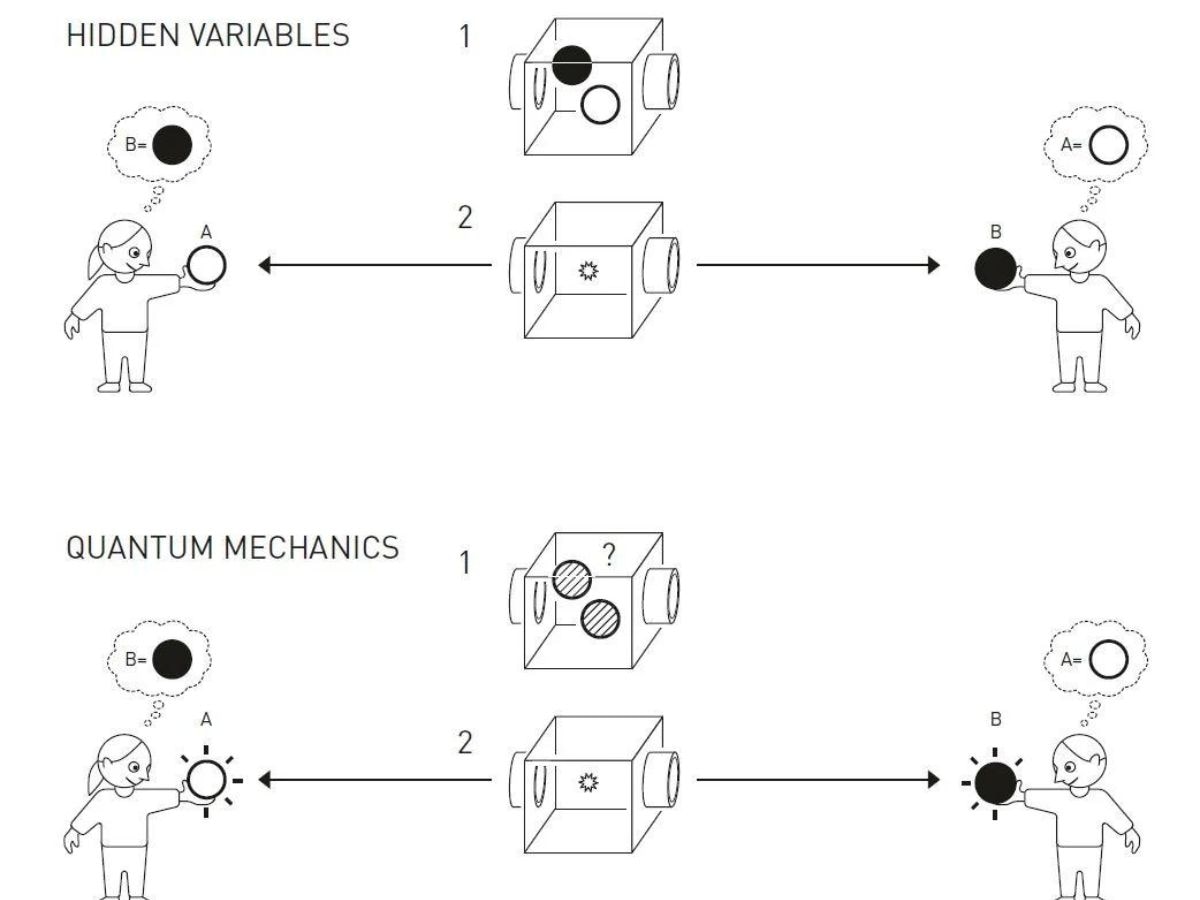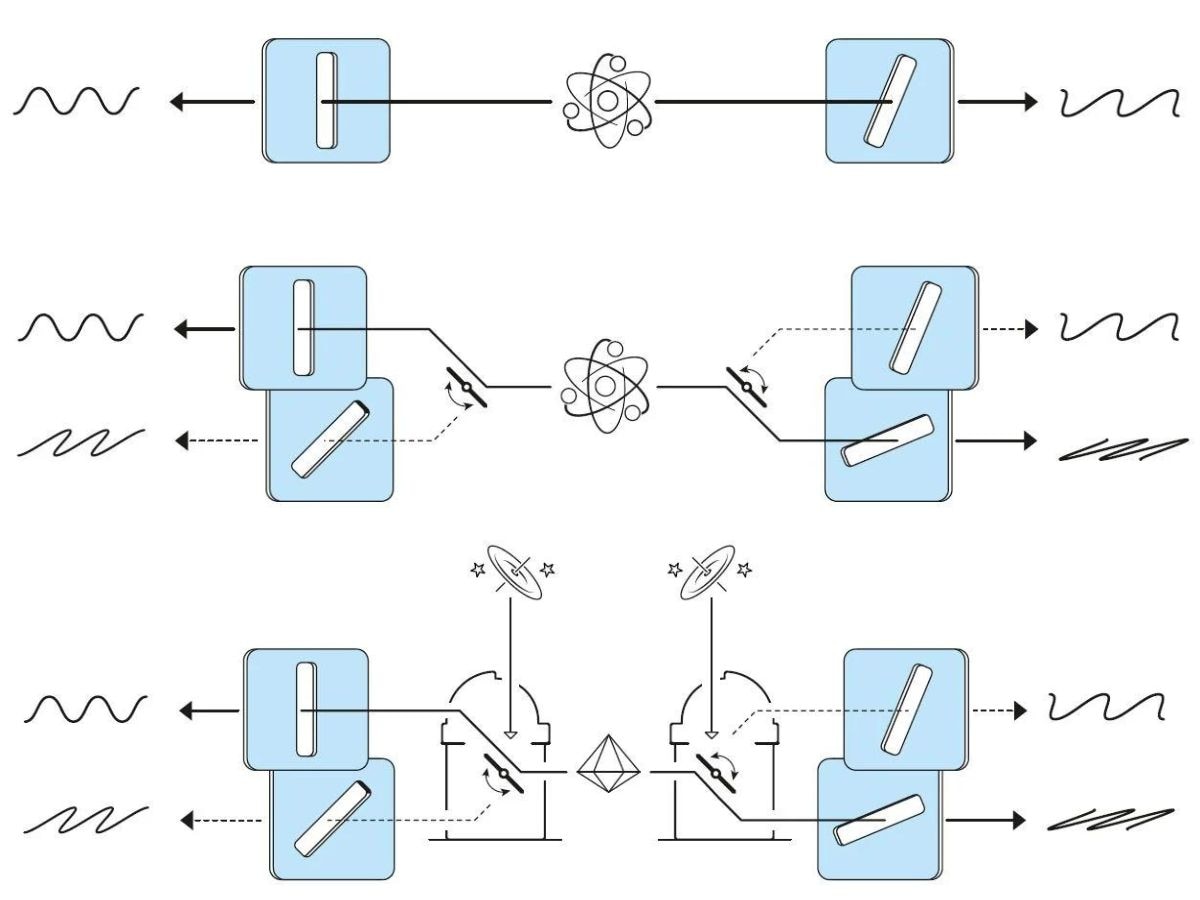Physics Nobel 2022: Alain Aspect, John Clauser and Anton Zeilinger, who won the 2022 Nobel Prize in Physics on Tuesday, separately conducted groundbreaking experiments in the field of quantum mechanics, which is the foundation for the new age of quantum technology. The physicists got the Nobel Prize “for experiments with entangled photons, establishing the violation of Bell inequalities, and pioneering quantum information science.”
They have demonstrated the potential to investigate and control entangled particles, in a phenomenon called quantum entanglement, an important aspect of quantum mechanics.
What is quantum mechanics?
Quantum mechanics is a branch of physics that explains nature on the scale of particles in the molecular and submolecular realm, and has resulted in advances such as transistors, lasers, Global Positioning System (GPS), quantum computers, electron microscopy and magnetic resonance imaging. These particles include atoms, electrons and photons, among others.
Quantum mechanics describes objects that have multiple probabilities for a particular event.
Quantum computing harnesses the laws of quantum mechanics to solve problems too difficult for classical computers.
What is quantum entanglement?
As mentioned above, it is an important aspect of quantum mechanics. Quantum entanglement refers to the phenomenon when the behaviour of one particle determines the behaviour of another particle. If an observer determines the properties of one particle, they will know the behaviour of the other. These are called entangled particles, and this is what Aspect, Clauser and Zeilinger studied.
Clauser, who runs a company in Walnut Creek, California, conducted a practical experiment to test quantum entanglement, and whether entangled particles contained pre-requisite information. Aspect, a professor at Université Paris-Saclay and École Polytechnique, developed a setup to close some loopholes in Clauser’s experiments. Meanwhile, Zeilinger, a professor at University of Vienna, Austria, used refined tools to demonstrate quantum teleportation, a phenomenon which makes it possible to move a quantum state from one particle to another at a distance.
For a long time, scientists have wondered whether the correlation between particles in an entangled state is because they contained hidden variables, or instructions that tell them which result they should show in an experiment.
Albert Einstein and his colleagues proposed the phenomenon of quantum entanglement for the first time in the 1930s. Einstein himself questioned the validity of entanglement, and described it as spooky action at a distance. Austrian-Irish physicist Erwin Schrödinger said entanglement was quantum mechanics’ most important trait.
Quantum mechanics goes against the ideas about cause and effect. A question arises that how can a particular thing be influenced by an event occurring somewhere else without a signal from that place reaching that thing.
Einstein described this as infeasible, and together with his colleagues Boris Podolsky and Nathan Rosen, presented a reasoning in 1935. The reasoning, which states that quantum mechanics does not appear to provide a complete description of reality, is known as the EPR Paradox.
Bell’s Inequalities
This is a concept proposed by Northern Irish physicist John Stewart Bell. Bell, who worked at CERN, the European particle physics laboratory, discovered that there is a type of experiment that could determine whether the world is purely quantum mechanical, or whether there could be another description with hidden variables (which would be responsible for the connection between entangled particles).
If Bell’s experiment is repeated many times, it would lead to results that must be lower than, or at most equal to, a specific value. This means that the correlation cannot exceed a specific value. This value is called Bell’s inequality. If this inequality was violated, it would mean that there were no hidden variables. Hence, quantum mechanics would be correct.
Clauser’s experiments gave results that violated a Bell’s inequality, which means that quantum mechanics cannot be replaced by a theory that uses hidden variables.
Explaining entangled pairs through balls
Scientists have explained entangled pairs in quantum mechanics through a machine that ejects balls in opposite colours in opposite directions. For instance, if a person called A catches the ball and sees that it is black, they will immediately know that the opposite person, B, has caught a white ball.

If the theory of hidden variables were correct, it would mean that the balls had always contained hidden information about which colour to show, the Nobel Prize Organisation says on its website. The quantum mechanics theory, on the other hand, says that the balls were grey until someone looked at them. One of the balls randomly turned white and the other turned black.
Quantum mechanics says that the balls are grey, with no secret information, and chance determines which becomes black and which becomes white in an experiment.
How Clauser tested Bell’s inequalities
Clauser and his colleagues conducted an experiment in which a pair of entangled particles were sent in opposite directions. Clauser’s apparatus emitted two entangled photons at a time, each towards a filter. Together with doctoral student Stuart Freedman, he presented a result that was a clear violation of a Bell inequality and agreed with the predictions of quantum mechanics.
One of the limitations to Clauser’s experiments was that it was inefficient in terms of producing and capturing particles. Also, the measurement was pre-set because the filters were at fixed angles, resulting in loopholes.
Hence, an observer could question the results and raise the possibility of the experimental setup selecting particles in a way such that the particles happened to have a strong correlation.
How Alain Aspect closed loopholes in Clauser’s work
Aspect helped eliminate this loophole by building a new version of Clauser’s experimental setup. Aspect’s setup registered the photons that passed through the filter as well as the ones that did not, implying that more photons were detected, and hence, better measurements.
Zeilinger conducted more tests of Bell’s inequalities by creating entangled pairs of photons. He shone a laser on a special crystal to create the photons, and used random numbers to shift between measurement settings. In one of his experiments, he used signals from distant galaxies to control the filters and ensure the signals could not affect each other.

Quantum teleportation
One can process information and transfer information in new ways, thanks to entangled quantum states. When particles in an entangled pair travel in opposite directions, and one of the entities meets a third particle in a way such that they become entangled, the particles enter a new shared state. Though the original properties from the third particle have been transferred to the solo particle from the original pair, the third particle loses its identity.
The phenomenon of transferring an unknown quantum state from one particle to another is called quantum teleportation, a type of experiment Zeilinger and his colleagues first conducted in 1997.

How the results help the world
The Nobel laureates’ experiments laid the foundation for quantum computation and quantum encryption.
Entangled quantum states have also been demonstrated between a satellite and a station on the ground. The experiments conducted by Clauser, Aspect and Zeilinger have paved the way for new ways to utilise the powerful properties of quantum mechanics.
ALSO READ | Quantum Computing: What Is It? How Is It Different From Classical Computing? How Does It Work?